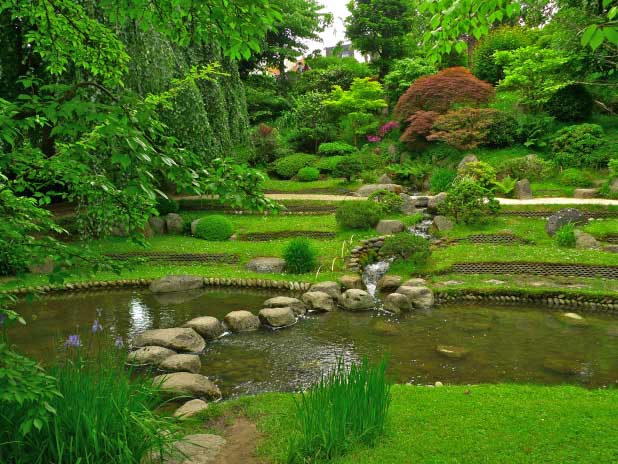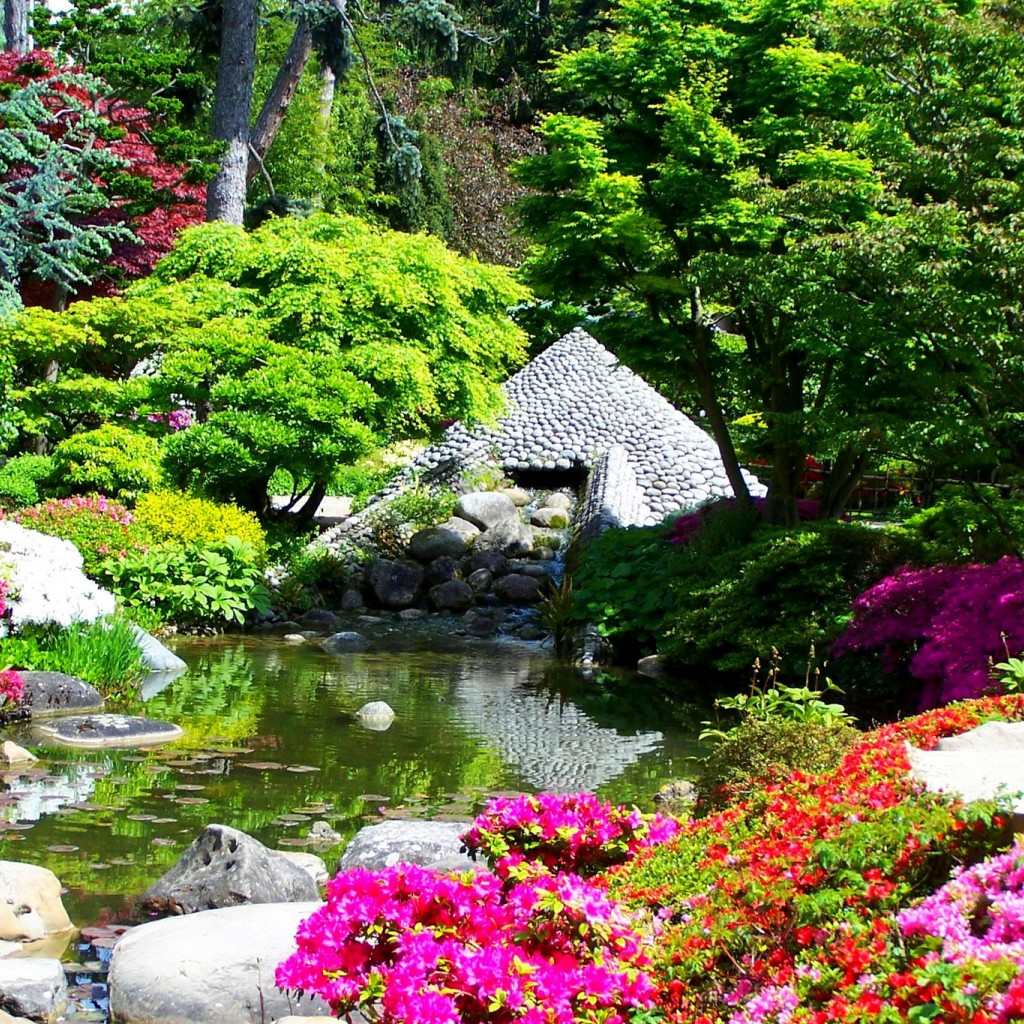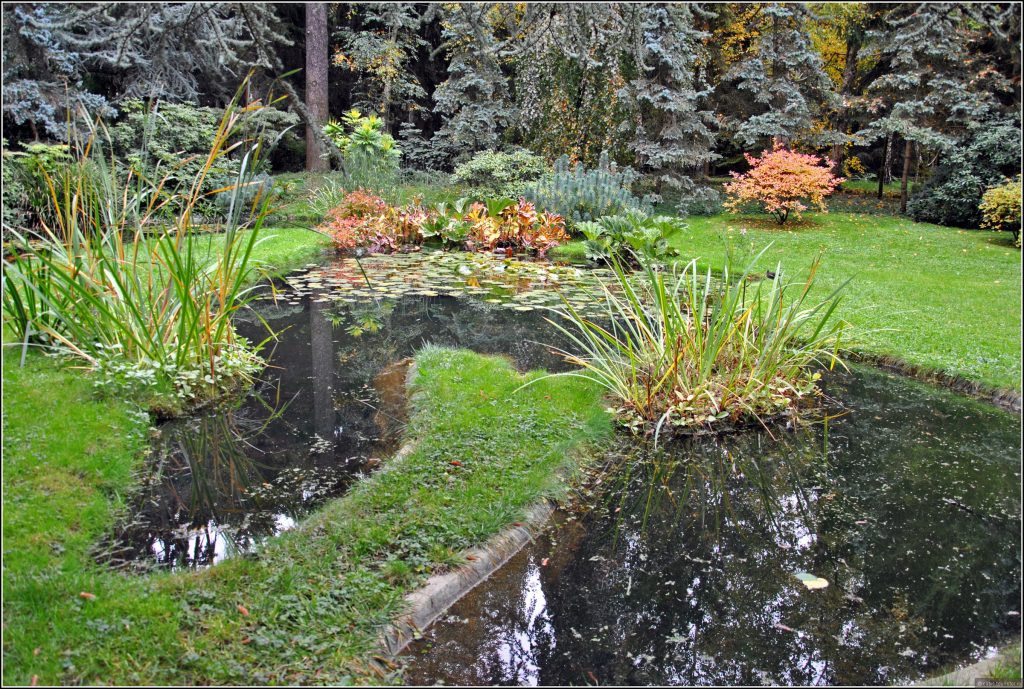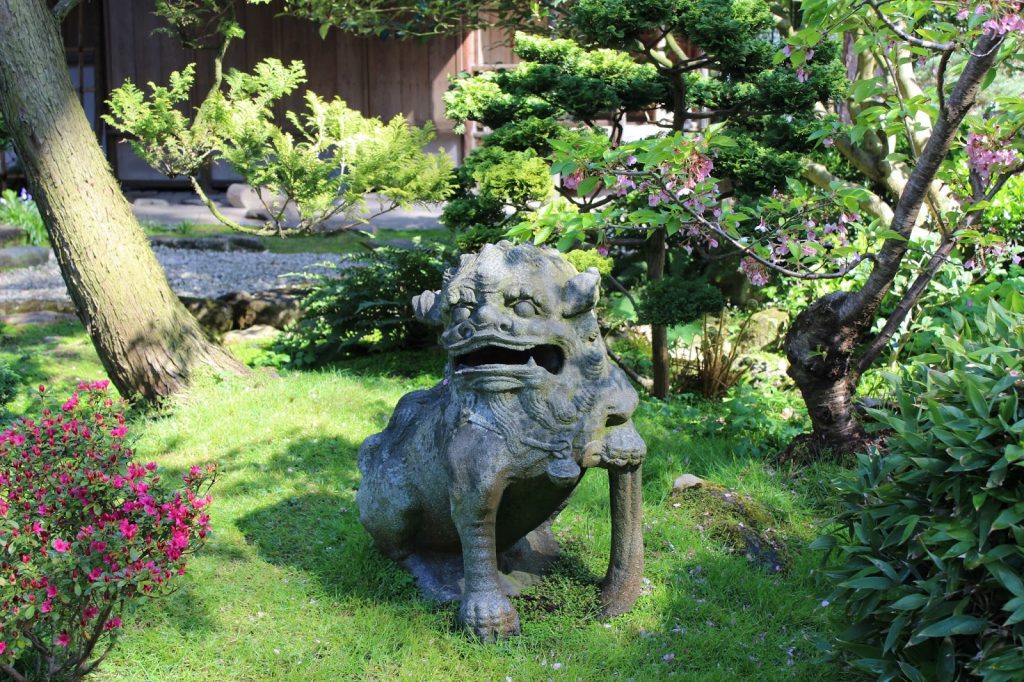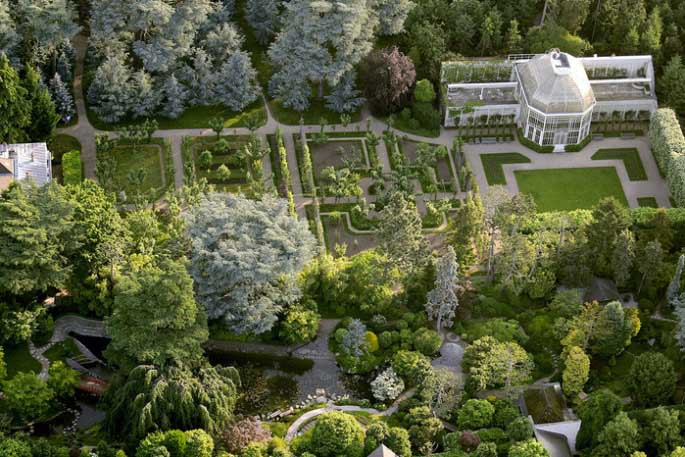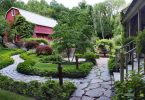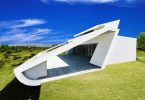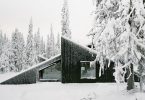Albert Kahn’s unique gardens
History of creation
The gardens are named after the French banker Albert Kahn, whose activities date back to the late 19th and first third of the 20th centuries. He traveled a lot around the world, learning at the same time the cultures of different countries. Having bought a land plot of almost 4 hectares in the outskirts of Paris at the end of the 19th century, he set out to create an ideal garden, where vivid memories of his travels would be embodied.

The landscape designer Achilles Duchamp, invited to implement the idea, began the project by creating a French garden. In it, he combined two eras: classicism of the 18th century and modern.
All Kahn’s gardens are created in such a way that, moving from one part of them to another, it is as if you are moving across different countries and even continents. So, the French and English gardens, the Vosges Forest are representatives of Europe, the Blue Forest personifies America and Africa, the exotic from the palmarium – Oceania, and the Japanese gardens are a symbol of Buddhist Asia.
During the economic crisis, Kahn went bankrupt, and his entire gardens were bought by the government. And in 1937 they were opened for public visits. In 1999 the park was completely destroyed by a hurricane, but in a short time it was revived almost in its original form..
Albert-Kahn Gardens are composed of elements of different styles
Japanese village;
English garden;
several forests of different colors;
French garden;
palmarium;
modern Japanese garden.
French garden
The creation of the entire landscape gardening composition began with the French garden. The classic square parterre here is outlined by a floral border that changes color as the flowering of the plants forming it alternates. Next to it is the kingdom of roses, where low bushes alternate with tall varieties and an arcade entwined with curly roses. Occasionally found apple and pear trees give the rose garden a unique flavor and harmony at the time of their flowering, while in summer their bright green sets off the beauty of blooming multi-colored roses.
Orchard in this park is adorned with fruiting trees, formed in the form of palmettes, growing among the lawns. The border of the French and English gardens is a neat linden alley. And at the exit from the classic French parterre there is a translucent bulk of the palmarium. In her greenhouse, tropical exotic species of Oceania and other places grow.
English garden
The English Garden was created under the direction of Albert Kahn by his gardener Louis Picard. But in the middle of the last century, Michel Farry redesigned this garden, as a result of which it acquired a hilly relief, closer to the landscapes of England. At the same time, many beeches, oaks, pines were additionally planted.
This part of the park is peaceful. In spring, its lawns delight the eye with a variety of flowering bulbs and bushes. And in autumn, a special mood is created by the colorful foliage of trees growing around the lawns. A fine gravel path leads to an artificial stream. The original bridge over it was built in the form of a huge stone, in which the river made passages. A miniature Norman-style house gives the landscape a soft homely charm.
Vosges and other forests
The landscapes of the forest part of the park are reminiscent of the homeland of Albert Kahn – French Alsace and the Vosges Mountains. The Vosges Forest is divided into three zones with increasing altitude:
The golden forest brings back memories of the Alsace plains. It is especially charming in autumn, decorated with openwork golden foliage of weeping birches. Descent from the mountains ends with swamps with their water lilies, irises and reeds. On their border grow spruces and cedars of the Blue Forest, so named for its characteristic color. Among its blue needles, rhododendrons, azaleas, hydrangeas stand out in bright colors.
Japanese garden
The Japanese village was created by Albert Kahn so that from the terrace of its main house one could observe the entire landscape of this garden. There are huge solitaire trees, boulders, bonsai trees and sculpted shrubs. Every now and then here you see the characteristic Japanese dry streams of stones with gray pebbles – water and brown – the shore. Traditional-style walkways and steps are not only beautiful but also comfortable in rainy weather.
Tea house. It is accessed by flat steps illuminated by Japanese lanterns. A lone lion near the house, as it were, guards its peace. A garden with discreet plants symbolically separates it from the whole world.
The modern Japanese garden was created almost three decades ago by the Japanese master of landscapes Fumiaki Takano according to the philosophy of Tao. Albert Kahn got to know her while traveling in Japan. A one and a half meter pyramid of white pebbles represents in it a symbol of life. A stream flows out of it and flows into a picturesque, colorful pond. On one of its banks there is an observation deck in the shape of Mount Fuji. A giant cedar and a big beech are peculiar representatives of the male and female beginnings of life. Various-sized structures of pink pebbles, steep bends of a river that is shallowing and then gaining strength again, a waterfall, which can be overcome by stepping on huge stones, breakwaters breaking a wide current of water – symbols of the Buddhist interpretation of the life of a famous financier. After all, this garden is the best memory of him.
The fabulously beautiful gardens of Albert Kahn uniquely combine the achievements of landscape architecture with a philosophical interpretation of life and nature. They give a sense of joy from their harmony..


